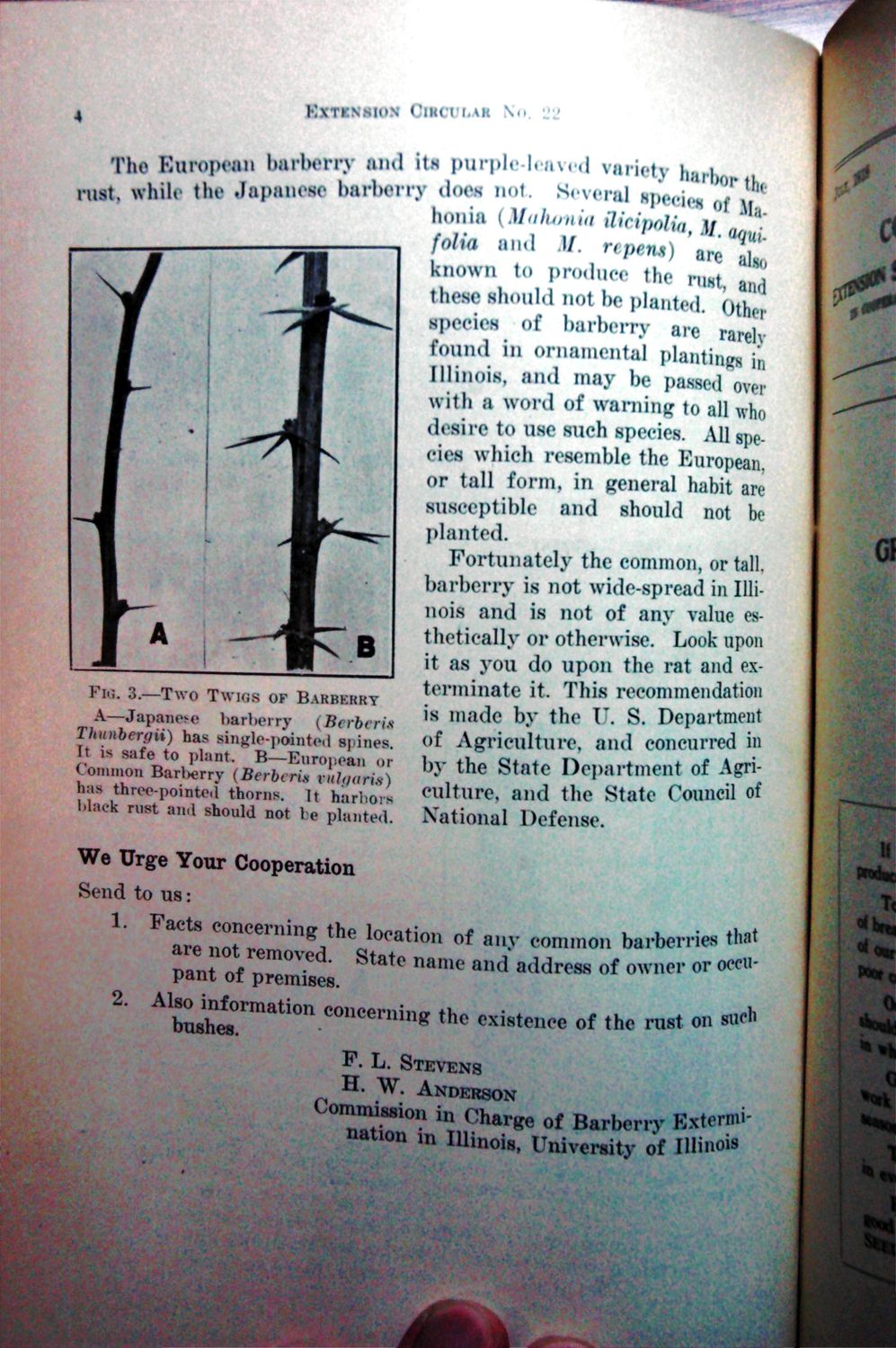Caption: War Publications - WWI Compilation 1923 - Article 29
This is a reduced-resolution page image for fast online browsing.

EXTRACTED TEXT FROM PAGE:
4 KXTKNSh'N ClKCUhAR No. 22 rust. barbcrn homa {M'thmiu ilicipolia, Mtaqufolia and M. repent) are also known to produce the niHt, and these should not be planted. Other species of barberry arc rarely found in ornamental planting in Illinois, and may be passed over with a word of warning to all who desire to use such species. All species which resemble the European, or tall form, in general habit are susceptible and should not be planted. Fortunately the common, or tall, barberry is not wide-spread in Illinois and is not of any value esthetieally or otherwise. Look upon it as you do upon the rat and exterminate it. This recommendation is made by the U. S. Department of Agriculture, and concurred in by the State Department of Agriculture, and the State Council of National Defense. FIG. 3.—TWO TWI*;S OF BAKBKRRY A—Japanese barberry (Berber!* Thunberffii) has single-pointed spines It is safe to plant B—European or Common Barlwrry (Berberig vulgaris) has t W p o i n t e d thorns. It harl.ors black rust ami should not be planted. We Urge Your Cooperation Send to us: 1. 2. A Fa at\rr nin V V° h Cati0n of " V P i n i o n barberries that ,ldrPSS ofOT> Pr W pant of S ^ r m t i o n . . ta, ° na C 0 d "' " ° " "* C 0 l l c e r a i » * « * existence of the rust on snob F. L. STEVENS H. W. ANDERSON Commission in Charge of Barberry Kxtermi nation m Illinois, University of Illinois
|